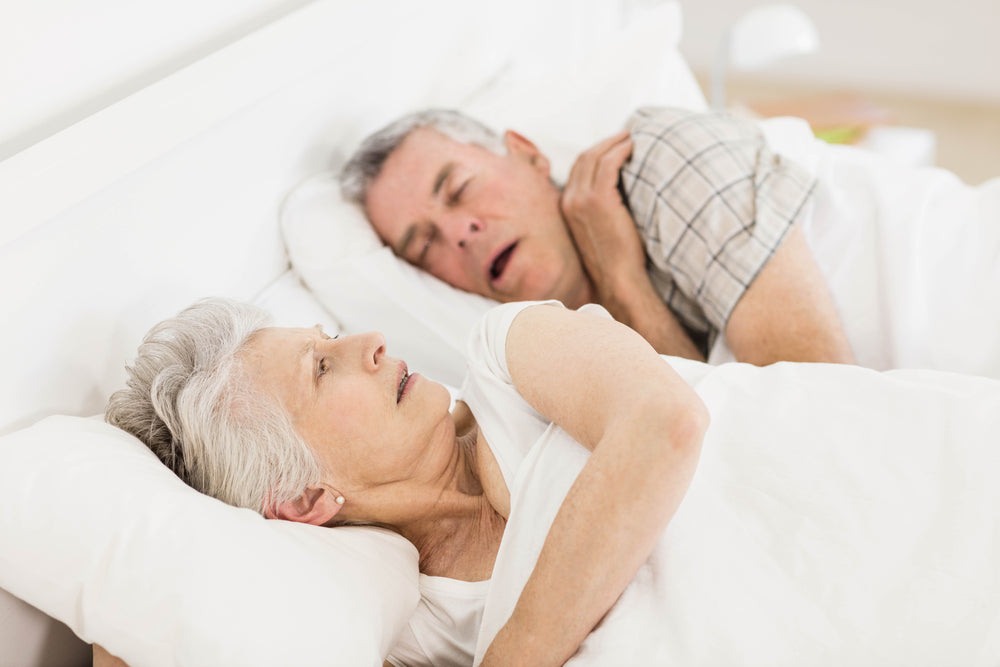Sleep apnea testing can be confusing, especially if you don’t know someone who has been formally diagnosed. Like with any medical condition, it comes with a whole host of new concerns as well as a set of new terminology you may not be familiar with. If you’ve recently been tested for or diagnosed with obstructive sleep apnea, or OSA, then you may have heard the term Apnea-Hypopnea Index (AHI). This is an extremely important metric for those with OSA and understanding it is an important step in coming to terms with your sleep apnea.
What is AHI?
The Apnea Hypopnea Index is the average number of times you experience an apnea or hypopnea per hour of sleep. An apnea event is a complete obstruction of your airway for more than 10 seconds whereas a hypopnea event is only a partial obstruction of the airway.
Now, people who do not suffer from OSA still experience a few of these events per night. It’s a normal occurrence during sleep because of how the body rests during this time. In fact, the average sleeper experiences up to 5 apnea or hypopnea events per hour of sleep.
What About Those With OSA?
While few of these apnea/hypopnea events are nothing to worry about, having too many of these events per hour of sleep is when you start to experience obstructive sleep apnea. The Apnea Hypopnea Index is actually used to indicate the severity of OSA in those who test positive for the condition. An AHI above 5 per hour is considered abnormal and may lead to a sleep apnea diagnosis.
There are three levels of OSA severity. They are categorized as mild (5-15 apnea events per hour), moderate (15-25 apnea events per hour), or severe (25+ apnea events per hour). Those with Mild OSA may be prescribed CPAP or AutoPAP therapy, but they may also be encouraged to adopt some lifestyle changes that could solve their sleep apnea problem.
However, if you are diagnosed with moderate or severe OSA, it’s likely your doctor or a sleep testing provider like ApneaMed will prescribe you some sleep apnea equipment.
How Does My CPAP or AutoPAP Help My AHI?
It’s very possible you’re experiencing (or have experienced) a fair amount of anxiety about the idea of having to use a continuous positive airway pressure (CPAP) or automatic positive airway pressure (AutoPAP) machine. But you should rest assured that these are both very effective treatments for those suffering from mild, moderate, and severe sleep apnea.
It is important to understand the difference between a CPAP and an AutoPAP as they do operate a little differently. A CPAP machine will give you a constant stream of air pressure throughout the night that will aid in opening the airway and removing any obstructions that could cause apnea or hypopnea events.
An AutoPAP is a newer, more advanced machine that can deliver pressure variances throughout the night--automatically adjusting to solve blockages in real time. This option may be better suited for those who experience severe sleep apnea or those who have extended blockages while they sleep. There are even some AutoPAP machines that have humidifiers in them to help fight against dryness that occurs from airway pressure.
If you are diagnosed with sleep apnea, you’ll need to treat your condition with an AutoPAP machine or similar device. Your AutoPAP machine is a prescription treatment that is specifically calibrated to your breathing, automatically adapting to give you incredible, uninterrupted sleep. The pressurized airflow will alleviate your excessive apnea or hypopnea events and you’ll start to experience the restorative, relaxing sleep you’ve been missing.

